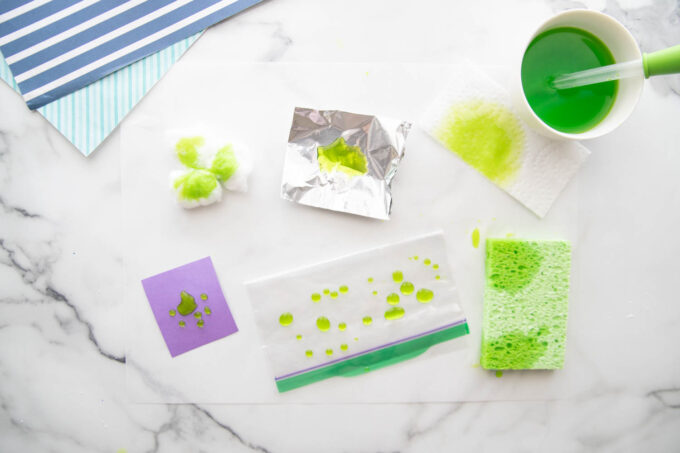Ever wonder why a sponge soaks up water or why metal feels cold to the touch? The everyday materials around us behave uniquely because of the materials they’re made from. Let’s explore material properties activities with simple experiments and free worksheets.
Note: Material properties are also a central topic in Chemistry. However, the focus is more on their molecular structure.
Material Scavenger Hunt: Students search their home or classroom for objects that fit specific material properties, such as absorbency or hardness, and write down what they find next to each property. This adds a layer of practical exploration and connection with everyday objects.What are Observable Properties?
Observable properties are characteristics of a material or object that can be identified and measured using our senses without needing special tools. These properties help us describe and understand what an object is made of and how it behaves. Some common observable properties include:- Color – What color is the material? For example, wood is usually brown, while metal might be shiny or silver.
- Texture – How does it feel when you touch it? A surface could be smooth like glass, rough like sandpaper, or soft like fabric.
- Shape – What shape does the material take? Is it round, square, or something else?
- Size – How big or small is the object or material?
- Flexibility – Can the material bend without breaking? For example, a rubber band is flexible, while a pencil is not.
- Hardness – How hard or soft is the material? A rock is hard, while a sponge is soft.
- Transparency – Can you see through the material? Glass is transparent, but wood is opaque.
- State of Matter – Is it a solid, liquid, or gas?
Printable Material Properties Activities Include:
Grade Level Recommendation: These activities are ideal for Kindergarten -3rd grade.Simple Science Experiment. Testing Absorbency Kids test the absorbency of fabric, paper towels, and plastic materials. They predict which material will absorb the most water and record their findings.

Try It: Material Investigation (Paper Towel Test). Students compare different paper towel brands, measuring how much water each absorbs. They record their results and reflect on the effectiveness of each.
Material Properties Crossword: A fun crossword puzzle where students fill in the blanks using material property words such as absorbent, waterproof, and flexible.Challenge: Design a Waterproof Shelter. Students are challenged to design and build a waterproof shelter for a small object using aluminum foil, plastic wrap, and paper towels. They test the shelter by spraying it with water and reflect on its success.
True or False: Material Properties This activity allows students to identify true or false statements about material properties, such as “Metal is flexible” or “Plastic is strong.”Free Activity: Material Properties Pack
Use this free materials project pack to learn more about the properties of materials.
More Printable Activity Ideas
- Natural vs. Man-Made Materials Worksheet: Students sort materials into categories based on whether they are natural (like wood or cotton) or man-made (like plastic or nylon), complementing the scavenger hunt and material sorting activities.
- Recyclables Activity Pack: What materials can be recycled and what can not? This is a simple but engaging pack for young scientists to explore recyclable materials.
